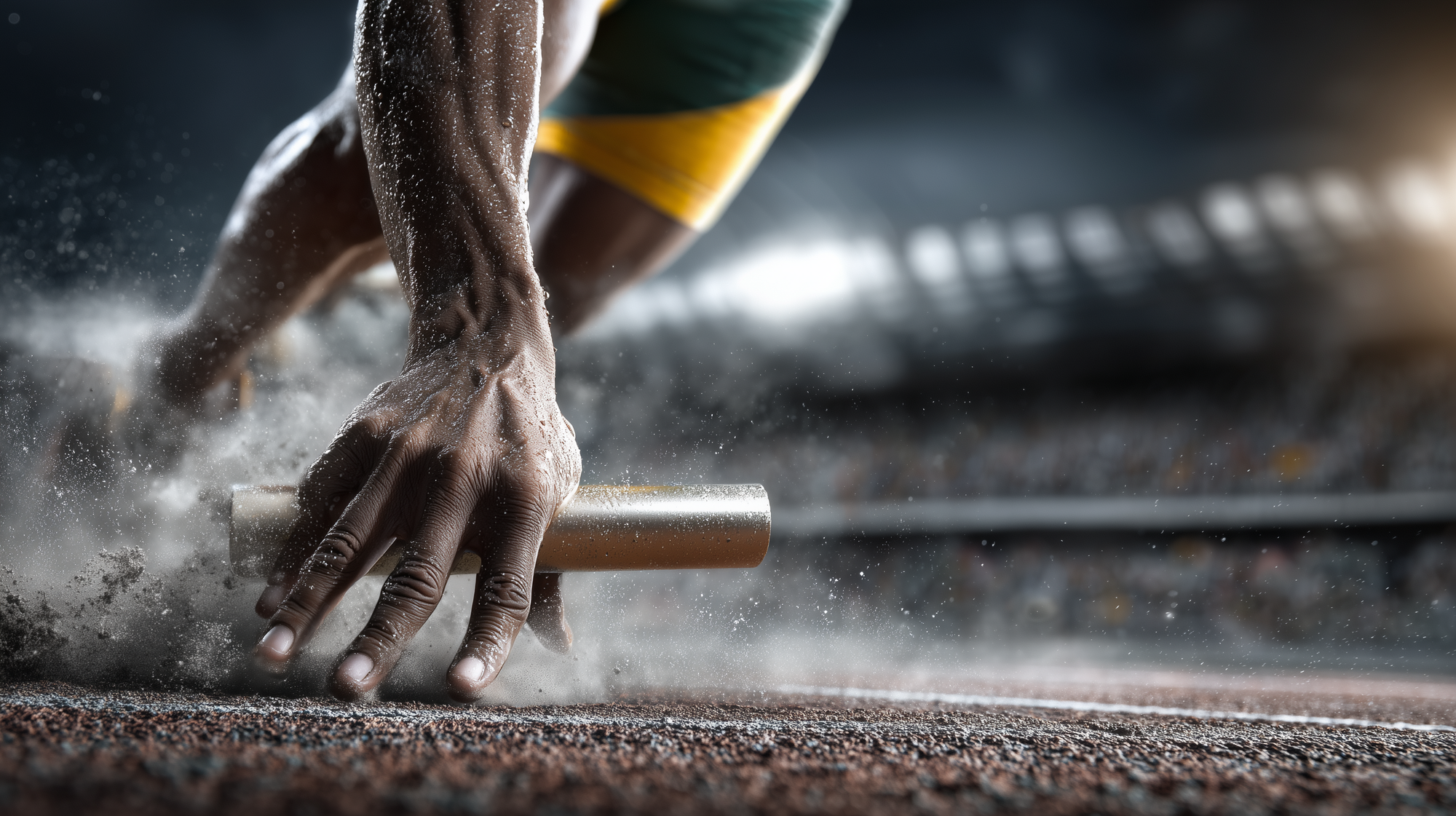Optimizing Images with AVIF & Responsive Delivery
Learn how to optimize images using AVIF, responsive <picture> fallbacks, and edge-based resizing with CDNs like Cloudflare and AWS. Boost performance, improve Core Web Vitals, and streamline delivery for all devices and screen sizes.
Introduction
Modern web performance is all about speed, efficiency, and delivering tailored experiences across an increasingly fragmented landscape of devices and network conditions. One of the most critical, yet often overlooked, components of performance optimization is image delivery.
According to HTTP Archive, images account for more than 50% of the average page weight. That means even small improvements in image size or delivery strategy can lead to significant gains in page load times, user engagement, and search engine ranking.
With the introduction of new image formats like AVIF and the evolution of responsive delivery techniques, we now have the tools to create lighter, faster-loading, and visually rich websites that adapt intelligently to user contexts.
This article serves as a comprehensive technical guide for front-end developers, DevOps engineers, and web performance architects. We'll walk through how to:
- Use AVIF, the modern image format built for the AV1 codec.
- Implement
<picture>-based fallbacks for legacy browser support. - Dynamically resize images at the edge using CDNs like Cloudflare and AWS CloudFront.
- Measure performance improvements using Core Web Vitals metrics such as Largest Contentful Paint (LCP) and Time to Interactive (TTI).
- Integrate these practices into CI/CD pipelines and asset management workflows.
But first, let’s get familiar with the new star of image optimization: AVIF.
Why AVIF?
As developers push for faster web experiences and reduced bandwidth consumption, modern image formats like AVIF are emerging as powerful tools in the optimization toolkit.
What is AVIF?
AVIF (AV1 Image File Format) is a next-generation image format based on the AV1 video codec developed by the Alliance for Open Media — a consortium that includes companies like Google, Netflix, and Mozilla. AVIF is designed to provide superior compression efficiency and high-quality image rendering, while supporting modern features like HDR and alpha transparency.
Key Technical Benefits of AVIF
AVIF isn't just another new format — it's a substantial leap forward in terms of technical capability. Here's why:
- Unmatched Compression: AVIF delivers 50% smaller file sizes than JPEG and around 20-30% smaller than WebP for equivalent visual quality.
- High-Quality at Low Bitrates: Even under aggressive compression, AVIF preserves more fine-grained details than JPEG and WebP.
- Alpha Channel Support: Like PNG and WebP, AVIF supports transparency — but with much better compression.
- HDR and Wide Color Gamut: AVIF supports advanced color profiles, making it suitable for high-fidelity visuals.
These properties make AVIF a strong candidate for both performance-focused and visually demanding applications.
AVIF vs. WebP vs. JPEG
Let’s look at a feature and performance comparison between AVIF, WebP, and JPEG:
| Feature | JPEG | WebP | AVIF |
|---|---|---|---|
| Compression Efficiency | Low | Medium | High |
| Transparency Support | No | Yes | Yes |
| Animation Support | No | Yes | Yes (via AVIF sequences) |
| HDR & Wide Color Gamut | No | Limited | Yes |
| Browser Support | Universal | Good (~95%) | Growing (~85%+) |
| File Size (same quality) | 100% | ~75% | ~50–60% |
Note: Actual performance varies depending on content and compression settings. Benchmarks from Cloudinary and Google Web.dev consistently confirm AVIF’s superiority in compression.
Limitations to Be Aware Of
While AVIF offers incredible benefits, it's not without trade-offs:
- Encoding Speed: AVIF encoding is CPU-intensive and slower than WebP or JPEG, which may be a concern in real-time or bulk processing workflows.
- Browser Support: While Can I Use: AVIF shows that most Chromium-based and Firefox browsers support AVIF, Safari support is partial, and older browsers still lack it.
- Decoder Maturity: Some devices and platforms may have slower decoding performance due to less mature implementations.
Despite these caveats, AVIF is production-ready for most modern users when used in conjunction with fallback strategies, which we’ll explore next.
Implementing AVIF with <picture> Fallbacks
Because AVIF isn't yet supported universally, we need a graceful and standards-compliant fallback strategy. The <picture> element in HTML provides a clean, semantic way to serve the best available image format based on what the user's browser supports.
Using <picture> and <source> for Format Fallbacks
Here’s the basic syntax for using AVIF with fallbacks to WebP and JPEG:
<picture>
<source srcset="image.avif" type="image/avif" />
<source srcset="image.webp" type="image/webp" />
<img src="image.jpg" alt="Description of the image" width="600" height="400" loading="lazy" />
</picture>How It Works
- Browser checks
type="image/avif": If supported, AVIF is used. - If AVIF is not supported, it checks for WebP.
- If neither AVIF nor WebP is supported, the browser loads the
imgelement’ssrc— usually a JPEG fallback.
This model is ideal for progressive enhancement: you serve the most optimized version possible without sacrificing compatibility.
Why You Should Always Include the <img> Element
Even though <picture> may look like a fancy replacement for <img>, it still requires an <img> element inside:
- It's the fallback image for unsupported formats.
- It provides the alt attribute, which is critical for accessibility and SEO.
- It also sets intrinsic dimensions (
widthandheight), which helps prevent layout shifts (important for Cumulative Layout Shift (CLS), one of the Core Web Vitals).
Accessibility and SEO Considerations
- Use descriptive
alttext: This benefits screen readers and search engines. - Set width and height: These attributes help browsers reserve space for the image, reducing layout shifts.
- Lazy loading: Add
loading="lazy"to defer offscreen images, reducing initial page load time.
Example: Responsive + Fallback
<picture>
<source
srcset="banner@1x.avif 1x, banner@2x.avif 2x"
type="image/avif" />
<source
srcset="banner@1x.webp 1x, banner@2x.webp 2x"
type="image/webp" />
<img
src="banner@1x.jpg"
srcset="banner@2x.jpg 2x"
alt="Promotional banner for our summer sale"
width="1200"
height="400"
loading="lazy" />
</picture>This delivers:
- AVIF to modern browsers.
- WebP to slightly older but still capable browsers.
- JPEG to legacy browsers.
And it handles high-DPI devices (like Retina displays) with 2x assets.
Responsive Delivery Techniques
Users browse the web on everything from low-end phones with 3G connections to high-resolution 5K monitors. Sending the same image to all users wastes bandwidth and hurts performance. That’s where responsive image delivery comes in.
Responsive image techniques allow us to serve the right image, in the right size, at the right time, based on screen size, resolution, and device context.
The Basics: srcset and sizes
The srcset and sizes attributes on the <img> element tell the browser:
- What versions of the image are available.
- Under what conditions each one should be used.
Example: Using srcset and sizes
<img
src="hero-800.jpg"
srcset="
hero-400.jpg 400w,
hero-800.jpg 800w,
hero-1200.jpg 1200w"
sizes="(max-width: 600px) 100vw, 800px"
alt="A scenic mountain landscape"
width="800"
height="533"
loading="lazy" />How this works:
srcsetprovides three image widths.sizestells the browser:- If the viewport is ≤600px wide, the image should take up the full viewport (
100vw). - Otherwise, the image will likely render at 800px wide.
- If the viewport is ≤600px wide, the image should take up the full viewport (
- The browser picks the most appropriate version before downloading, based on layout and screen size.
Device Pixel Ratio (DPR) and High-Resolution Images
On high-DPI screens (e.g., Retina displays), a 400px wide image may need to be delivered at 800 physical pixels to appear crisp.
Use DPR-based srcset:
<img
src="logo-1x.avif"
srcset="logo-1x.avif 1x, logo-2x.avif 2x"
alt="Company logo"
width="200"
height="80"
loading="lazy" />Browsers with a device pixel ratio (DPR) of 2 will request logo-2x.avif.
Using <picture> + srcset Together
You can also combine format switching (<picture>) with responsive variants:
<picture>
<source
type="image/avif"
srcset="
gallery-400.avif 400w,
gallery-800.avif 800w"
sizes="(max-width: 600px) 100vw, 800px" />
<source
type="image/webp"
srcset="
gallery-400.webp 400w,
gallery-800.webp 800w"
sizes="(max-width: 600px) 100vw, 800px" />
<img
src="gallery-800.jpg"
alt="Gallery preview showing artworks"
width="800"
height="600"
loading="lazy" />
</picture>This technique ensures:
- Optimal format selection.
- Proper scaling for screen sizes and resolutions.
- Graceful fallbacks.
Why This Matters: Core Web Vitals
Responsive delivery improves Largest Contentful Paint (LCP) by:
- Reducing download size.
- Prioritizing above-the-fold assets.
- Letting the browser pre-calculate layout (preventing reflows and reducing Cumulative Layout Shift (CLS)).
And all of this boosts user experience, SEO, and conversion rates.
Dynamic Resizing at the Edge
While pre-generating multiple image variants works well, it can become unwieldy fast — especially in applications with user-generated content, a large asset library, or frequent design changes.
This is where dynamic image resizing at the edge becomes a game-changer.
What is Resizing at the Edge?
Edge resizing means images are resized, reformatted, and optimized on-demand by CDN edge servers, close to the user. This avoids overloading your origin server, reduces latency, and allows for real-time image transformations.
Imagine serving image.jpg?width=600&format=avif to one user and image.jpg?width=1200&format=webp to another — all from the same source image, with zero preprocessing.
Key Benefits
- Reduced origin traffic: Your application stores just the original high-quality asset.
- Scalability: You don’t need to manually generate or store every size and format combination.
- Personalization: Serve different images to different users (e.g., based on device, location, or bandwidth).
Implementation with Cloudflare Images
Cloudflare Images offers an all-in-one platform for hosting, resizing, and optimizing images.
Basic example:
https://imagedelivery.net/<account_hash>/<image_id>/width=800,format=avifWith Cloudflare Images, you can:
- Store originals in their system or pull from a public origin.
- Use URL-based transformation parameters (width, height, quality, format).
- Automatically serve AVIF or WebP based on client support.
Bonus: You can integrate this with <picture> and srcset:
<picture>
<source
srcset="
https://cdn.example.com/img/banner?width=600&format=avif 600w,
https://cdn.example.com/img/banner?width=1200&format=avif 1200w"
type="image/avif"
sizes="(max-width: 768px) 100vw, 1200px" />
<source
srcset="
https://cdn.example.com/img/banner?width=600&format=webp 600w,
https://cdn.example.com/img/banner?width=1200&format=webp 1200w"
type="image/webp"
sizes="(max-width: 768px) 100vw, 1200px" />
<img
src="https://cdn.example.com/img/banner?width=1200&format=jpeg"
alt="Homepage promotional banner"
width="1200"
height="400"
loading="lazy" />
</picture>AWS CloudFront + Lambda@Edge
AWS takes a more composable approach. Using Lambda@Edge and Amazon S3, you can dynamically:
- Intercept image requests.
- Resize and reformat images on the fly.
- Cache the result at CloudFront edge locations.
Architecture Overview:
- User requests
/images/photo.jpg?width=800&format=webp - CloudFront triggers a Lambda@Edge function:
- Validates and parses parameters.
- Pulls the original from S3.
- Uses Sharp or ImageMagick to transform.
- Response is cached at the edge.
Key considerations:
- You control everything — great for complex logic or multi-tenant setups.
- Slightly higher setup and maintenance effort than turnkey services like Cloudflare Images.
For a step-by-step tutorial, see AWS: Serverless Image Handler
Caching Strategies
To maximize performance and reduce costs:
- Set long TTLs for transformed variants.
- Use cache keys that incorporate transformation params (e.g., width, format, quality).
- Avoid regenerating images on every request. Most CDNs let you cache transformed images at the edge for hours or days.
Tip: When using Cloudflare Workers or AWS Lambda@Edge, consider adding ETag headers or conditional If-Modified-Since logic to avoid redundant processing.Origin Considerations
- Store high-resolution originals (preferably in a lossless format like PNG or high-quality JPEG).
- Monitor origin traffic: poorly cached setups can overwhelm your backend.
- Consider rate-limiting or watermarking for public-facing transformation endpoints to prevent abuse.
Edge resizing unlocks incredible flexibility — and when paired with AVIF and responsive <picture> syntax, it becomes a powerhouse of modern image delivery.Performance Outcomes
The goal of all this effort — AVIF, responsive images, edge delivery — is not just technical excellence. It’s to make websites faster, more usable, and more successful.
Here, we’ll examine how these strategies impact performance metrics, particularly Core Web Vitals, and we’ll highlight real-world data to quantify the benefits.
What Are Core Web Vitals?
Core Web Vitals are a set of performance metrics defined by Google to measure real-world user experience. The three key metrics are:
- Largest Contentful Paint (LCP): How long it takes the largest content element (usually an image) to appear.
- Cumulative Layout Shift (CLS): How much the layout shifts during page load (e.g., image dimensions not defined).
- First Input Delay (FID) / Interaction to Next Paint (INP): Measures interactivity latency.
For images, the biggest impact is on LCP and CLS — and responsive, optimized delivery directly improves both.
Quantified Performance Gains
Let’s look at some benchmarks from trusted sources:
Google Web.dev – AVIF vs JPEG/WebP
According to Web.dev’s AVIF comparison, switching from JPEG to AVIF yielded:
- 45–55% file size savings over JPEG
- 20–30% over WebP
- Improved LCP scores by up to 1 second on mobile networks
Cloudinary – Image Format and Load Time
Cloudinary's tests show:
- AVIF decreased median image payload by 60%.
- Faster image loads led to significant LCP improvements, especially on slower connections.
- Pages using AVIF and responsive images had higher Lighthouse scores, often in the 90–100 range.
Real-World Example Using Lighthouse
Let’s take a theoretical before/after scenario for a product page with a large hero image:
| Metric | Before (JPEG, no responsive) | After (AVIF + edge + responsive) |
|---|---|---|
| Hero Image File Size | 450 KB | 180 KB |
| Largest Contentful Paint | 3.4s | 1.8s |
| Time to Interactive (TTI) | 5.0s | 3.2s |
| Lighthouse Performance Score | 64 | 92 |
That’s a dramatic improvement in both metrics and user-perceived speed.
Impact on SEO and Business Metrics
- Google uses LCP and other Core Web Vitals in its ranking algorithm. Sites with poor LCP may rank lower in search results.
- Faster load times correlate with lower bounce rates and higher conversion rates.
- Sites with image-heavy pages (e.g., eCommerce, travel, news) benefit the most from responsive AVIF strategies.
Best Practices & Pitfalls
While AVIF and responsive delivery offer major performance wins, they also introduce complexity. Here, we’ll highlight common mistakes to avoid, along with best practices for maintaining a clean, efficient image pipeline.
✅ Best Practices
1. Always Provide Fallbacks
- Use the
<picture>element to serve AVIF, then WebP, and fall back to JPEG or PNG. - Include
<img>with alt text and intrinsic dimensions for SEO and layout stability.
2. Leverage CDNs for Edge Resizing
- Use services like Cloudflare Images, imgix, or AWS CloudFront with Lambda@Edge to dynamically resize and reformat images.
- Optimize transformation URLs with format detection and width parameters.
3. Embrace Responsive Syntax
- Use
srcsetandsizesto tailor image delivery to various viewport sizes and resolutions. - Don’t forget to support high-DPI devices with
2xassets or DPR-basedsrcset.
4. Define Image Dimensions
- Always specify
widthandheight(or use CSS aspect-ratio) to reserve layout space and minimize CLS.
5. Lazy Load Offscreen Images
- Add
loading="lazy"to defer loading until the image scrolls into view. - Consider combining with
fetchpriority="high"for LCP-critical images above the fold.
6. Optimize During Build or Deployment
- Use tools like Squoosh CLI or Sharp to automate AVIF and WebP conversion in your CI/CD pipeline.
- Integrate image optimization into Webpack, Vite, or other bundlers.
7. Monitor Performance Metrics
- Use Lighthouse, PageSpeed Insights, and WebPageTest to track LCP, TTI, and CLS.
- Continuously A/B test image settings and formats.
⚠️ Common Pitfalls
1. Relying Only on One Format
- Serving only AVIF or WebP without fallbacks can result in broken images on older browsers.
- Always use format negotiation (
<picture>) or content negotiation via CDN.
2. Over-Compressing
- Aggressive compression (especially at very low quality settings) can lead to blurry or distorted images.
- Balance visual fidelity with size; test settings visually and with real users.
3. Ignoring Cache Headers
- Don’t forget to configure cache-control headers for transformed images.
- Edge caching without validation can result in outdated or incorrect assets.
4. Not Considering Origin Traffic
- If using dynamic resizing without caching, origin servers can get overwhelmed by repeated requests for original assets.
- Use CDN caching and origin shielding where possible.
5. Missing Accessibility Elements
- Omitting
altattributes or using them improperly reduces accessibility and SEO. - Ensure every image has meaningful, descriptive alt text — or
alt=""for decorative ones.
Quick Checklist: Production-Ready Image Optimization
- AVIF + WebP + JPEG fallback using
<picture> - Responsive sizes with
srcsetandsizes - High-DPI variants for Retina/4K displays
- Lazy loading and priority hints
- Edge resizing via CDN (Cloudflare, AWS, etc.)
- Intrinsic dimensions or aspect-ratio
- CI/CD integration for image generation
- Valid cache-control and ETag headers
- Performance tested in Lighthouse and WebPageTest
Conclusion
Image optimization isn’t just a nice-to-have — it’s a foundational performance strategy for delivering fast, engaging, and accessible web experiences. As devices and networks become more diverse, the need for intelligent, adaptive image delivery becomes even more critical.
By combining next-gen formats like AVIF, responsive design patterns, and edge-based transformations, you can achieve significant gains in:
- Page speed and Lighthouse scores
- Core Web Vitals, especially LCP and CLS
- Search visibility and user experience
- Conversion rates and retention on mobile
The technical strategies outlined in this article are designed to be scalable and production-ready — whether you're building a small marketing site or a massive image-heavy platform.
To go further, check out the following tools and resources:














Discussion